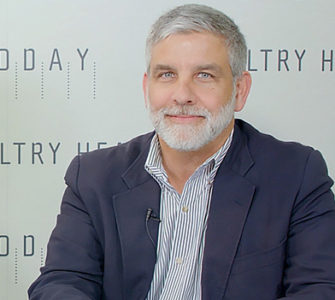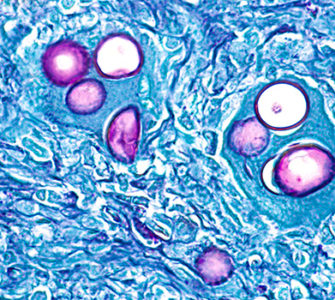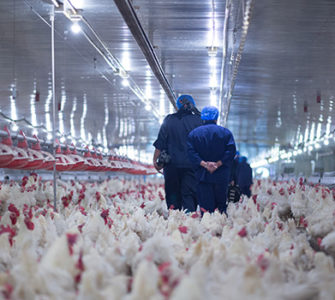Mathis: Long-term planning key to effective coccidiosis management
Whether the production system is antibiotic-free or conventional, long-term planning and strategic rotation programs are the best ways to ensure effective, sustainable control of coccidiosis, the poultry industry’s No. 1 disease, according to a veteran coccidiosis specialist.
“Our current [in-feed] coccidiosis-control products are 40 to 50 years old, the number of available coccidiosis drugs is limited, and the supply of ionophores and vaccines is limited,” Greg Mathis, PhD, of Southern Poultry Research, Athens, Georgia, told Poultry Health Today.
“We just don’t have a lot of options.”
Planning and coccidiosis management
Today’s broiler farms in antibiotic-free (ABF) production rely heavily on vaccines and synthetic anticoccidials for coccidiosis prevention. Mathis explains the limited supply of approved in-feed coccidiostats has led to higher vaccine use and has increased likelihood for product shortages in some situations. The vaccines also require careful administration for maximum uptake and efficacy.
According to Mathis, the keys to controlling coccidiosis in ABF production are planning and management.
“The shift to ABF has growers switching to vaccines, extending brooder times and incorporating alternative products,” he reported.
While Mathis thinks some alternative or natural products have shown great potential for managing coccidiosis, “I tell producers not to add these new alternative products blindly without understanding the consequences,” he stressed, explaining that many of them haven’t been thoroughly tested outside laboratory or research settings.
Potential alternatives
In particular, Mathis said, pre- and probiotics, saponins and essential oils have shown potential for stimulating the bird’s immune system, controlling Salmonella, improving gut health and nutrient absorption.
“I think one of the biggest changes in the alternative products available today is the improved purity and consistent supply,” Mathis said.
When used in conjunction with coccidiosis vaccines, alternative products along with management practices such as developing immunity through longer brooder times can enhance bird health and production. “We’re seeing some good results from these products even if we don’t know exactly how they work,” he said.
With the shift to ABF production, important management lessons learned in improving chick quality and broiler production are benefitting conventional production as well.
“The small factors that affect bird quality come to the forefront in ABF production,” he explains, “but the 80% of the market in conventional production and coccidiosis management is learning a great deal from the 20% in ABF.”
Posted on July 7, 2016
















